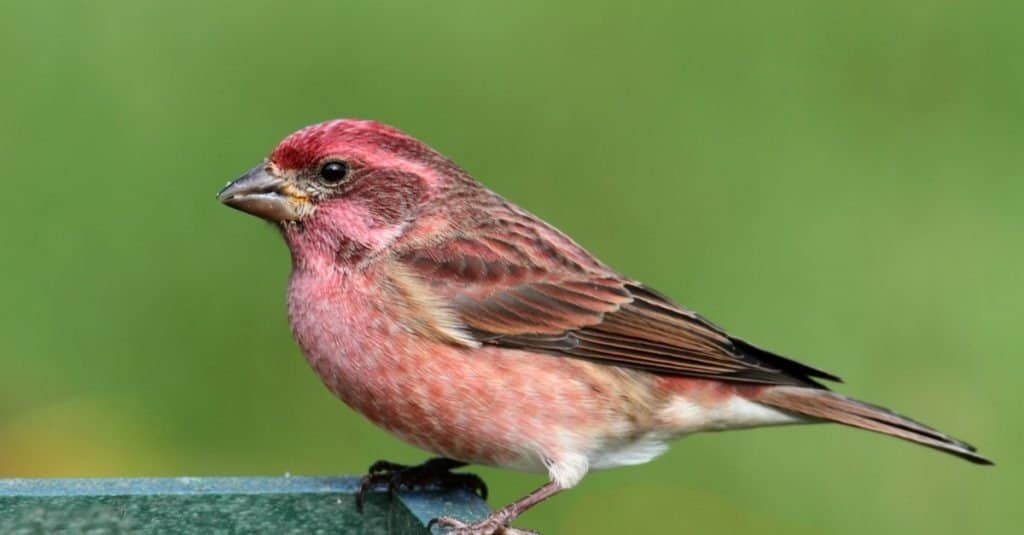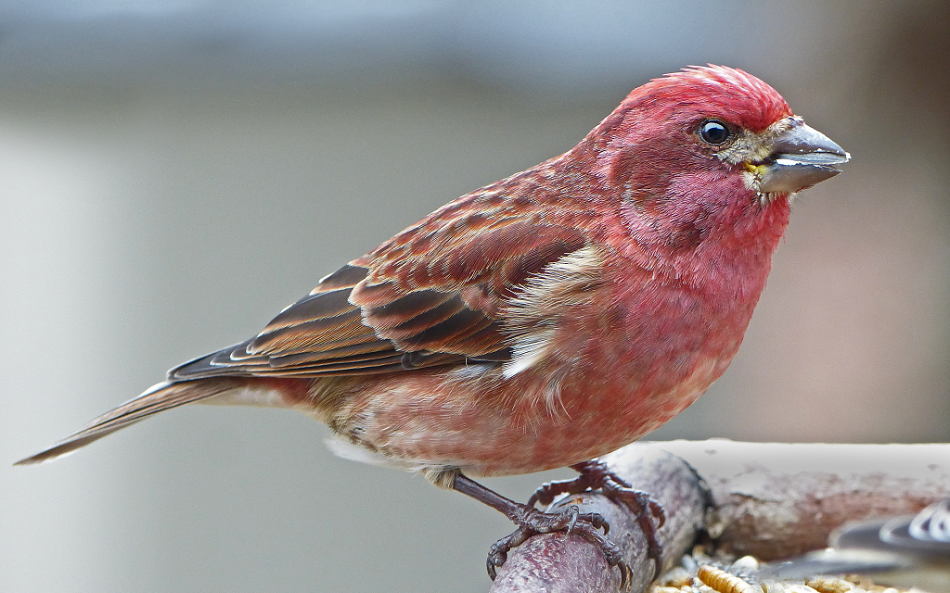Table Of Content

House Finches and Purple Finches produce similar songs, but their distinctive call notes can help you identify them. And while they’re not as easy to tell apart at first glance as the male birds, there are differences in their markings if you look closely. Diving deeper into the physical features, both birds share a thick, conical bill for seed-cracking, but House Finches have a slightly smaller bill compared to the Purple Finch. Purple Finches, however, lack this dark brown streaking, or it’s barely noticeable.
Purple Finch Vs. House Finch: Songs, Habitat & Identification
These birds are not territorial, but they do tend to live together in flocks. In terms of house finch nesting habits, they tend to nest close together along with the rest of their community. If you’ve ever asked yourself this question, you probably saw an adult male house finch. But there are several significant differences in terms of finch colors between the two species. When comparing the two species, it’s important to note that the males of both birds have unique coloration.
Similar SpeciesHouse Finch
While some territorial behavior may still be present, it tends to be less pronounced compared to the Purple Finch, reflecting the species’ adaptability to shared nesting spaces. Male Purple Finches can be quite territorial and aggressive during the breeding season. To assert dominance and defend their chosen nesting areas, males perform vocalizations and visual cues. Territorial disputes between males are not uncommon and sometimes involve confrontations as they strive to maintain control over their selected breeding territories. This Finch’s introduction to the eastern United States marked the beginning of a significant range expansion. Over the decades, it has spread across North America and is now one of the most widespread and abundant bird species on the continent.
Purple Finch Information provided by the - tn.gov
Purple Finch Information provided by the.
Posted: Fri, 01 Feb 2019 20:33:32 GMT [source]
Similar SpeciesCassin's Finch
Visually speaking, males of this species are covered with a reddish-purple array of feathers, as well as some brown features on their back and white on their bellies. However, female finches have a mix of browns and whites all over their bodies. During the summer, they feed on a variety of fruits, seeds, and insects. Purple Finches can be easily identified by their bright red plumage on the head and breast of males, while females tend to be more brown and plain-faced.
Conversely, Purple Finches are solitary and territorial during the breeding season, although this behavior is relaxed during the winter season. They often gather in flocks during winter and are known to vocalize to protect their territories while perched on the nest. The Purple Finch is typically found in coniferous and mixed forests and are irregular winter visitors to feeders.
Differences In Diet And Feeding Behavior Between Purple Finch And House Finch
Door to Nature: Confusing House and Purple Finches - Door County Pulse
Door to Nature: Confusing House and Purple Finches.
Posted: Fri, 01 Dec 2017 08:00:00 GMT [source]
The two species are roughly the same size, but they have slightly different body shapes. House Finches tend to have more slender bodies with proportionate heads. Depending on the posture of the bird, its body can take different shapes, so you want to make sure to observe the bird in various stances to determine the true shape of the body. The house finch is not a migratory bird, and they live year-round in all their known regions. These areas include a wide variety of habitats, and they can be found across the United States.

Purple Finch Identification
The male’s vibrant plumage and melodious song likely contributed to its selection. Unfortunately, the House Finch is not typically designated as the official state bird of any U.S. state. House Finches also contribute to the avian chorus but with a varied and cheerful chirp. House Finches produce a variety of calls, each serving a specific purpose.
House Finch vs Purple Finch: How to Tell the Difference
These differences are especially useful for identifying birds perched at feeders. House Finch tails extend far beyond their wing tips whereas the wing tips of a Purple Finch reach almost halfway down their tail. House Finch tail feathers are always rounded whereas Purple Finch tail feathers are pointed.
How to tell the difference between a House Finch and a Purple Finch?
As their name suggests, House Finches are usually found around people and are a fairly common backyard bird. Although they are similar in size and shape, they can be easily distinguished by their color; the male House Finch is reddish-orange while the male Purple Finch is reddish-purple. Knowing how to reliably differentiate between the two species is key in order to accurately identify birds in the field. Both male and female Purple Finches are known to vocalize a song to protect their territories while perched on the nest. The Purple Finch is distinguishable by its brown plumage and blue jay-like primary feathers that reach past its secondary feathers. The behavior of Purple Finches changes over the course of the seasons.
They’ve adapted well to urban and suburban environments, and their numbers are generally stable. They’re more widespread in the eastern U.S. during the non-breeding season but become less common as you move west. House Finches prefer to build their nests in more urban settings, such as on building ledges or in hanging planters right outside your home. They typically use small twigs, grass, and leaves to create their nests.
About 10,000 different bird species populate the world, so it’s not surprising that several species look remarkably similar. Two of these species that look nearly identical are the House Finch and Purple Finch. I admittedly have a very difficult time telling the two apart, so I’m hoping this guide will not only give you clarification but also myself. Here are a few things you should know when trying to figure out which is which. A perched House Finch usually has a distinct, rounded head whereas a Purple Finch tends to have a straighter profile with a smoother transition between the back and head. Purple Finches are also more barrel-chested and have a front-heavy appearance.

In Purple Finches, the faint white brow noticeable in males is a prominent white brow in females. Female House Finches, on the other hand, have a consistently plain head. The underbelly of female House Finches is a dull white with streaks that fade into the belly more.
The Purple Finch and the House Finch are around the same size as a sparrow. Although they aren’t in the same family as sparrows, they are shaped a lot like those seed-eating birds. It’ll take some practice and the key to telling the difference is to give some time before making your judgments.
Keep reading to learn more about the vocalizations of these two finch species. Male house finches are often gray, brown, or yellow to light orange throughout the rest of their body except their head and chest. Even the lightest colored purple finch is more boldly marked than a house finch.
The male House Finch doesn’t have as much red on the neck and back as the Purple Finch. The House Finch also has more orange-red plumage than the raspberry red of the Purple Finch. Although flight speed of the Purple Finch has never been compared to that of the House Finch, it does have longer wings. Since the Purple Finch uses those long wings to fly from boreal forests in Canada all the way to the southern USA, it can probably fly faster than the House Finch.

No comments:
Post a Comment